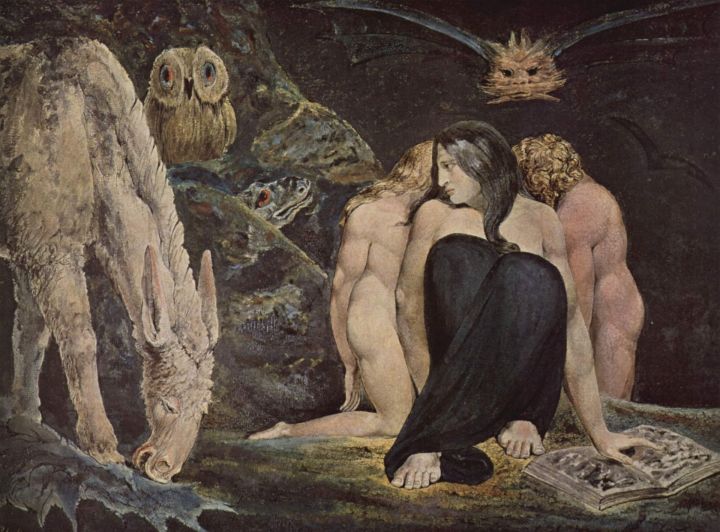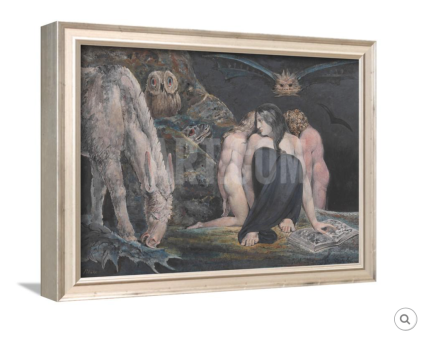Mythology, spiritual vision and mysticism fuelled the depictions of the late William Blake, English poet, artist and print maker. Firstly I love this painting. I came across it before and as a worshipper of Hecate, wanted to better understand the depiction and the painter who envisioned this mystical and solemn rendering of The Patron Goddess of witches, Hecate.

The painting dates from 1795 and was previously called Hecate, sometimes it is referred to as The Triple Hecate. Perhaps you’ve never heard of Enitharmon? Well me neither, so I did some research.
To understand Blake’s vision, you must know that like any creative fictional author, Blake liked to invent characters, but also his own take on mythology. Enitharmon was a central mystic creation, a character in a story if you like. Enitharmon takes on the guise in Blake’s mythology as Hecate, the goddess of witchcraft. To Blake, Enitharmon represented sexual dominance – very racy for the mid 1800’s, and he felt that by being free from sexual constraints would further creativity.
Much has been written about this painting and the convert meanings hidden within the interpretation. I am no learned art critic, but from what I’ve read,
“She is triple, according to mythology: a girl and a boy hide their heads behind her back. Her left hand lies on a book of magic; her left foot is extended. She is attended by a thistle-eating ass, the mournful owl of false wisdom, the head of a crocodile (blood-thirsty hypocrisy), and a cat-headed bat.” – S. Foster Damon, A Blake Dictionary.
Hecate is said to set the trap of false religion here. But what does that mean? Not a false religion which is paganism? No, what Blake wanted to depict was a divinity in feminine will and sexuality that was denied by the establishment of christianity. She is the triple goddess of the underworld. In some writings the animals all represent things.
Either way,. interesting reading. But beyond facts and research, for me, this painting is full of wonder. It inspires my pagan wonder and it’s a beautiful depiction of ‘the goddess’ as crone. So ultimate, although the artist’s intensions are interesting, what’s really important is what it mean’s to me, and to me I see beauty in it.
The painting is housed at The Tate in London. As a Londoner I might go and see it for real some time. Maybe I should by a little framed print of it? I quite like this one at art.co.uk or maybe I’ll just find my own frame.

You’ve peaked my interest in how Paganism and Witchcraft is portrayed in art with this post. I myself might have to do a little research. It’s interesting to see how witchcraft and paganism has been represented by artists throughout history. From the little I’ve seen, artists tend to be open-minded about Witchcraft, and critical of the powers and institutions that decry it as “evil.” Excellent post!
LikeLike